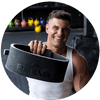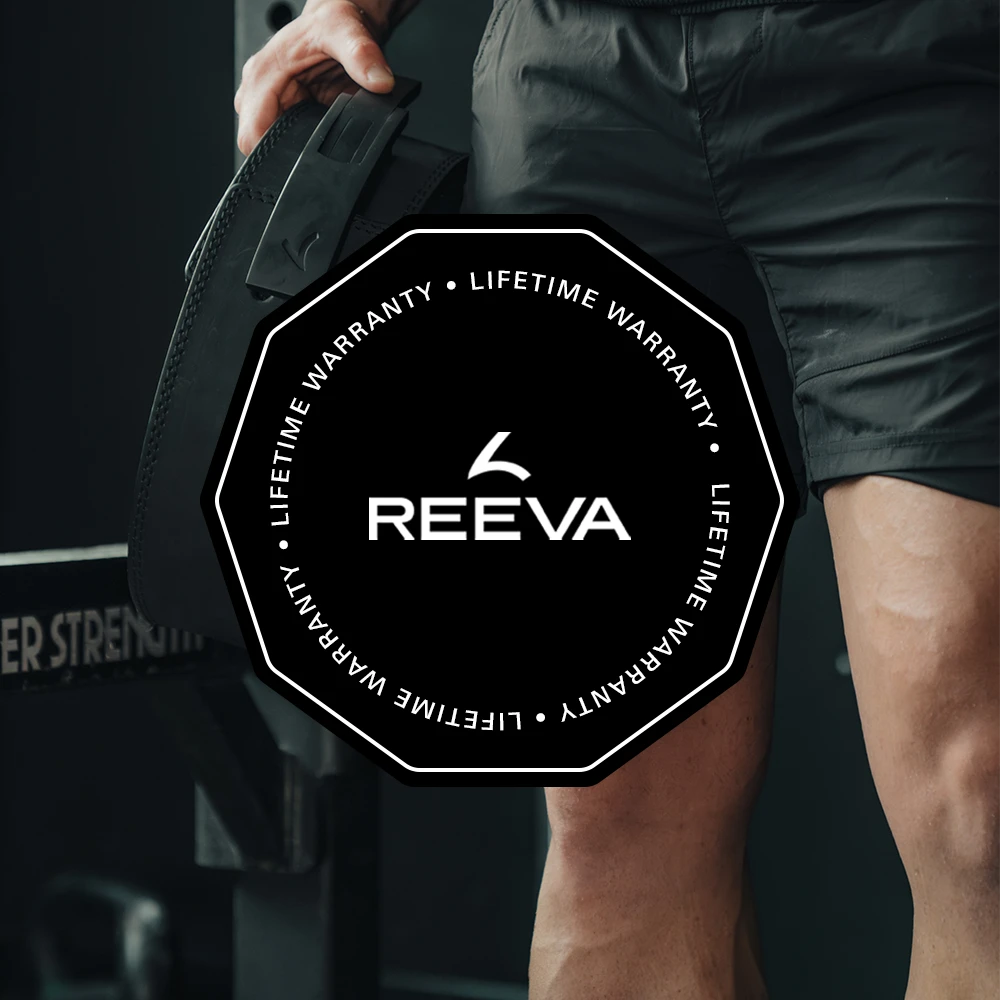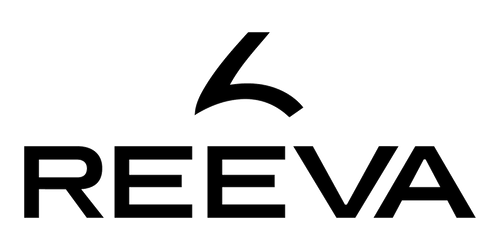What customers say about this product
Cintura Lombare Crossfit
✓ Realizzato in Materiali genuini al 100%
✓ Molto durevole e breve tempo di rodaggio
✓ Vita garanzia su questa cintura di sollevamento
In primo piano su ↓

Dai un'occhiata alla nostra ultima innovazione: la nuova cintura di sollevamento in schiuma EVA con sistema di rilascio rapido. La cintura è specificamente progettata per il sollevamento pesi e l'allenamento funzionale e offre un supporto bilanciato in tutto il retro senza limitare i movimenti.
Riduci al minimo il rischio, massimizza le prestazioni.

"My secret weapon for unlocking new levels of strength"
~ Rob Lipsett, Athlete & Entrepeneur
-
In poche parole, quelle cinture più economiche che inondano il mercato sono prodotte in massa in Cina utilizzando materiali a basso costo. Sono fatti di PU Leather e riempiti con imbottitura in cartone.
Nel tempo, l'umidità si insinuerà e romperà il cartone. Si ottiene una cintura di sollevamento che non offre un sostegno adeguato e, quindi, perde la sua funzione. Potrebbe sembrare una vera cintura di sollevamento, ma fidati, non dureranno.
Le cinghie di sollevamento Reeva sono realizzate con precisione da artigiani qualificati. Utilizziamo le pelli di bufala più pregiate provenienti da concerie esclusive, garantendo una qualità e una longevità senza pari.
Inoltre, le nostre fibbie in acciaio inossidabile rinforzato su misura sono forgiate da fabbri locali. Ciò significa che le nostre fibbie sono incredibilmente robuste e praticamente indistruttibili.
Stiamo parlando di qualità di alto livello che garantisce una vita di uso. Siete disposti a investire un po' di più per un prodotto che non solo supera la concorrenza, ma anche li supererà di un miglio?
-
Crediamo veramente nella qualità dei nostri prodotti. È per questo che offriamo una garanzia di produzione a vita su questo nastro trasportatore. Quando il vostro articolo si rompe a causa di una lavorazione difettosa, offriamo una sostituzione gratuita.
-
• 100% artigianale nella nostra fabbrica
• Realizzato con il filato sintetico più forte in uso oggi
• Resistente alla corrosione e alle sollecitazioni fino a 9,384 ps
• Fori di precisione, per un comfort e un sostegno ottimali
• Logo idraulico a fascio pressato
-
Quali sono i costi di spedizione in Italia?
Offriamo la spedizione gratuita per ordini superiori a 100€. La spedizione normale (ordini inferiori a 100€) verso l'Italia costa 9,95 €.Come verrà spedito il mio ordine?
Il tuo ordine in Italia verrà consegnato tramite DHL o DPD. Riceverai un collegamento di tracciabilità quando l'ordine lascia il nostro magazzino.Quanto tempo ci vorrà prima di ricevere il mio ordine?
Il tuo ordine in Italia verrà consegnato in 3-5 giorni lavorativi. -
Posso restituire il mio ordine se non mi piace?
Sì, accettiamo volentieri i resi e offriamo un rimborso completo.Cosa devo fare se il mio prodotto è danneggiato?
Contatta il nostro supporto! Quando hai effettuato l'accesso al tuo account, il sistema di ticket di supporto verrà visualizzato nella parte inferiore dello schermo.Per ora, solo gli utenti registrati possono utilizzare questo sistema.
I vantaggi di una cintura di sollevamento per il vostro allenamento 👇

Lifetime warranty
When investing in high-quality fitness equipment, it's essential to have confidence in the product's durability and longevity. Our products are specifically created to perform and outlast your most grueling training session. When you purchase gear from us, it’s backed by the Reeva promise. We stand behind our weightlifting equipment and accessories and we’re confident you’ll love our premium grade products.
On the off chance that you experience a manufacturing defect on any item (such as broken stitching or other damage upon arrival), you can return it for a complete replacement for the lifetime of owning your belt.
Frequently Asked Questions about Lifting Belts
-
A lifting belt provides support to your lower back and core muscles during heavy lifting exercises. It helps to stabilize your spine and reduce the risk of injury by increasing intra-abdominal pressure. This can improve your overall lifting performance by allowing you to lift heavier weights with better form.
Remember, a lifting belt isn't a magic item. It's important to use it with proper technique and training for best results. Using a lifting belt in your workouts can make you stronger and help prevent injuries. It's a good addition to your routine.
-
A lifting belt can help with strength training, but it's not essential for everyone. If you are a beginner or are not lifting extremely heavy weights, you may not need to use a lifting belt.
Before using a belt for support, it is important to build core strength and learn proper lifting technique. This will help create a strong foundation. Using a lifting belt too often can make your core muscles weaker. This is because they might rely too much on the support the belt provides instead of getting stronger by themselves.
Ultimately, you should base the decision to use a lifting belt on your individual needs and goals. If you're not sure if you need a lifting belt, ask a fitness professional for advice.
-
It is best to wear a lifting belt for heavy lifting exercises like squats, deadlifts, and overhead presses for safety. The lifting belt gives extra support and stability to your core, which is helpful when lifting heavy weights. However, it is important to remember that a lifting belt is not a substitute for proper form and technique. You should use it in conjunction with a solid foundation of core strength and good lifting mechanics.
Some lifters also choose to wear a belt during max effort lifts or when they are attempting new personal records. This extra support can help reduce the risk of injury and provide added confidence during challenging lifts.
Ultimately, you should base the decision to wear a lifting belt on your individual goals and comfort level. If you are unsure, start by using the belt into your training gradually and see how it feels. Remember, listening to your body and prioritizing safety should always come first in your fitness journey.
-
When picking a lever lifting belt, it's crucial to know the distinctions between a lever belt and a standard prong belt. A lever belt has a lever mechanism for adjusting tightness, while a regular prong belt uses a buckle. Knowing these distinctions can help you make the right choice for your lifting needs. Considering your preferences and lifting style is essential when deciding between the two types of belts.
A lever belt is easier to adjust and secure in place with a lever mechanism for precise adjustments. This can be beneficial for lifters who prefer a quick and secure fit without the hassle of adjusting prongs.
Some weightlifters may find it harder to put on and take off a lever belt compared to a regular prong belt. Additionally, lever belts tend to be more expensive than prong belts, so cost may be a factor to consider.
-
Use this text block to discuss some commonly asked questions like shipping and returns, sizing, warranties, or product and company details.
-
Belts can help increase squat weight, but the amount added depends on the person's strength and lifting skills. Wearing a belt can help people lift heavier weights more comfortably, possibly increasing their squat by 10-20%. In the end, Lifting Belts do not help you lift more weight, but they support your core during heavy lifts.
It's always best to focus on building strength and proper technique first, rather than relying solely on a belt to boost your squat numbers. Remember, consistency and dedication to your training will ultimately lead to progress and improvement in your squat performance.
-
Using a belt while lifting heavy weights can help stabilize the spine, reduce injury risk, and increase pressure in the abdomen. Belts can also provide a tactile cue for bracing your core, helping you maintain proper form throughout the lift. Some weightlifters feel more confident and mentally strong when wearing a belt, which can help them lift heavier weights.
However, there are also some cons to consider when lifting with a belt. Using a belt too frequently can weaken your core muscles over time.
They become dependent on the belt for support instead of developing their strength independently. This can ultimately hinder your overall strength and stability in the long run. Using a belt in training should be an addition, not a replacement for good technique and strong core muscles.
Decide whether to use a belt based on your goals, experience, and comfort level when lifting weights. Talk to a coach or trainer to see if you should use a belt when lifting weights. Remember, proper technique, consistency, and progressive overload are key factors in improving your strength and performance in the gym.
-
Choosing between a 10mm or 13mm belt depends on what feels best for you. It's all about personal preference.
The 13mm belt is typically thicker and may provide more support, while the 10mm belt is slightly lighter and more flexible. Some weightlifters like the 13mm belt for heavy lifts because it provides more stability. Others prefer the 10mm belt for deadlifts and squats because it is less restrictive.
Try both belt sizes to see which one helps you keep good form and feel secure during lifts. Remember, the belt should enhance your performance, not hinder it. Choose the belt that best aligns with your lifting goals and technique, and always prioritize safety and proper form above all else. With the right belt and proper technique, you can take your lifting to the next level and reach your strength goals effectively.
















